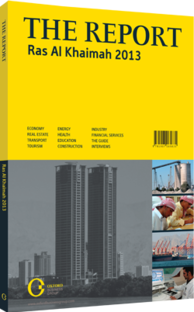Trading up: Both internal and external GCC imports and exports have increased considerably
Boosting economic integration among the Gulf states has been a key component of the GCC since it was established in late May 1981. While the six states that make up the GCC have implemented joint projects in a wide variety of sectors, economic cooperation remains a core concern. Over the past three decades the region’s GDP growth rates have consistently been among the highest in the world, primarily due to expansive state spending fuelled by hydrocarbons income. At the end of 1980, the year before the GCC was established, the region had a total GDP of $192bn. By the end of 2012 this figure had grown more than eight-fold to $1.56trn.
Trade Flows
Trade flows both within the GCC and between the GCC and other economies have expanded substantially since it was founded. According to IMF data, in 1980 trade flows among GCC states were at $8bn, equal to 3.77% of the region’s trade with the rest of the world. By end-2012 intra-GCC trade was worth nearly $100bn, according to data from Bahrain’s Ministry of Industry and Commerce. The jump in trade within the GCC over the past decade is largely due to the establishment of the GCC Customs Union in 2003 and, subsequently, the Gulf Common Market in 2008.
The GCC as an economic bloc has seen a substantial rise in external trade flows over the past 30 years as well. By the end of 2011 the GCC’s total trade with the rest of the world was worth around $1.19trn, up from just $138bn in 1984, according to data from the GCC and Bahrain’s Ministry of Industry and Commerce. The balance of trade in the bloc has historically been heavily weighted towards exports, particularly hydrocarbons. In 2011 the region’s exports were worth $811.2bn, according to figures from the GCC, compared to imports worth $379.1bn.
The bloc’s external trade profile has changed dramatically over the past 30 years as well. By 2009 emerging markets accounted for around 45% of its total trade, equivalent to growth of about 11% annually since 1980. Over the same period GCC-OECD trade rose by around 5%, according to Economist Intelligence Unit data.
New Agreements
A number of potentially transformative free trade agreements (FTAs) are currently in various states of negotiation. In 2011 trade with the Association of South-East Asian Nations (ASEAN) accounted for nearly 8% of the GCC’s total – around 10% of exports and 4.5% of imports – according to the most recent data from the European Commission (EC). ASEAN trade is expected to jump considerably in the coming years if an FTA between the two regions is reached. In mid-2010 foreign ministers from the two blocs met in Singapore to sign a two-year action plan with the goal of laying out a blueprint for an eventual FTA. In 2012 this was extended through the end of 2013. ASEAN and the GCC also recently announced their intention to establish a new plan to build on the first one, and to move the two blocs closer to an FTA.
The GCC is also in the early stages of developing an FTA with Europe. In 2011 the EU was the GCC’s single largest trade partner, accounting for 11.7% of its trade balance. Unlike most of the GCC’s trading partners, imports from the EU outweigh exports to the bloc. The two sides launched discussions more than two decades ago, but negotiations stalled in 2008. In late April 2013 the EU announced plans to open an office in Abu Dhabi, with the long-term goal of restarting talks on the FTA.
Breakdown of regional GDP, 2012
You have reached the limit of premium articles you can view for free.
Choose from the options below to purchase print or digital editions of our Reports. You can also purchase a website subscription giving you unlimited access to all of our Reports online for 12 months.
If you have already purchased this Report or have a website subscription, please login to continue.

